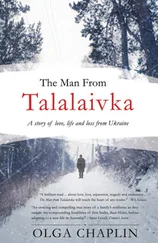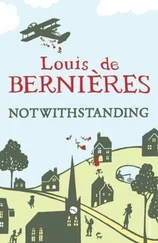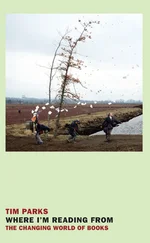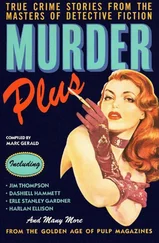At the end of the First World War, the region had been producing 87% of Russia’s coal output, 76% of its pig iron, 57% of its steel, more than 90% of its coke, over 60% of its soda and mercury as well as important manufactured and agricultural goods. It was with good reason that Vladimir Lenin, the leader of the Russian Bolsheviks, then described the Donbass as not merely “an indispensable area” but “a region, without which the entire construction of socialism would just be a piece of wishful thinking.”
In 1918 the Soviet Donetsk–Krivoy Rog Republic was declared in a bid to resist the German-supported Ukrainian People’s Republic, which was attempting to take control of the country in the wake of the Russian imperial collapse. In 1919, says Heather, three tanks supplied to the Whites by the British were used in action near Hughesovka. By 1921 the fighting was over, but the region afflicted by famine. The Soviets now began the reconstruction of the city which, after seeing its population drop during the civil war, saw it shoot up to 174,000 by 1926. Immediately after the war the city was renamed for Trotsky but in March 1924 it became Stalin. It is widely assumed that Hughesovka was named for the new Soviet leader, but in fact this is not true. The word stal means “steel” and the local communist leadership thought it appropriate, and in their dedication linked the name to that of Lenin and his steely attributes. Very soon after this, however, it was reported in the press that the town had been renamed for Stalin and it seemed judicious, as he consolidated his power, to let people assume that this was indeed the case and that the local leadership had been the first off the mark in the USSR to honor their new leader. In 1929 the name was slightly tweaked to become Stalino.
As the city began to recover, running water was piped in, writes Colin Thomas, who made a three-part documentary about the town in 1991. Thousands of peasants in the countryside around Stalino were taught to read and write and material conditions began to improve for the city’s workers too. But in 1928, the secret police claimed to have discovered a “counter-revolutionary plot” and, as Thomas writes, this led “to the arrest of half of all engineers and technical workers in the area and the consequent swift promotion for those below them in hierarchy.” The town’s cathedral was torn down by the party and collectivization began. This was followed by the campaign against the kulaks , which was to see hundreds of thousands from all over the Soviet Union sent into exile or executed. The result was that, even before the Holodomor of 1932–33, which would hit the region badly, starvation began to set in around Stalino.
One of the few Western journalists to cover the Holodomor truthfully (some infamously did not) was a Welshman called Gareth Jones. His interest in the area came via Hughesovka. His mother had been a tutor there before the revolution to some of Hughes’s grandchildren. In August 1930 he managed to get to Stalino. Ten days later he wrote to his parents: “In the Donetsk Basin conditions are unbearable. Thousands are leaving. I shall never forget the night I spent in the railway station on the way to Hughesovka. One reason why I left Hughesovka so quickly was that all I could get to eat was a roll of bread—and that is all I had up to seven o’clock. Many Russians are too weak to work.” Thomas also records that in September he had an article in the Western Mail which was headlined: “Starving Miners’ Flight from Communism, Famous Steel Centre No Longer Prosperous.”
In October 1941 Stalino was taken by German and Italian troops. The war devastated the city and region. As the Axis forces approached, many miners and others, including Jews, fled or were evacuated, many with their companies. Thousands of those who remained behind were sent as slave laborers to the west. The Holocaust was prosecuted in this region with as much ferocity as anywhere else. In Mariupol, on the Black Sea coast, Jews were shot. In Yenakievo 555 Jews were rounded up, driven to nearby Gorlovka and thrown alive down a mine shaft. In Artyomovsk, some 3,000 Jews were herded into an alabaster mine just outside town, where they died of suffocation and starvation. In Stalino itself a ghetto was established and thousands killed, many by being shot and then disposed of down a mine which was no longer working, called 4-4 Bis. Ukrainian police collaborated in this, but as elsewhere at least some Jews were saved by their neighbors, and not only Jews were murdered by the Nazis and their helpers. Gas vans were also used in Stalino.
Stalino was liberated in September 1943 and reconstruction, including the draining of flooded mines, began all over again. And then, yet again, famine hit the region in 1946–47. Men came home from the war, but for years women vastly outnumbered them and so many were sent into the mines to work. Gradually, a new city was born and the layout of the center and suburbs we have today was laid down in this period. These were years of hope, and older people have fond memories of them. I met Galina Konstantinivna, an economist and academic, who was born in 1937 and lived as a child in a village near the city. Her background was typical. Her mother was Russian but her family had originally come from Latvia and her father was from the ancient Greek community which once thrived on the Black Sea coast.
Among Galina’s earliest memories are “not having enough to eat” but being “surrounded by love.” She recalled being loaded into a freight truck in 1941 and evacuated to Saratov, a town in Russia on the Volga River. The family came back in 1943 immediately after the Germans were expelled. She did not see white bread until years after the war was over. As a child, she had to chip in like everyone else to help with work, and so “we managed to reconstruct the destroyed city in five or seven years.” When I asked her which were the best periods of the city’s history after this, she replied that one of them was at the beginning of the 1960s when the city and region were dominated by communist boss Vladimir Degtyarov (1920–93). “He was very authoritarian,” she recalled. If he walked through the city, renamed Donetsk in 1961, and saw some rubbish, woe betide the person responsible. Degtyarov stamped his mark on the city. After a visit to Versailles he is said to have sent Donetsk’s gardeners to France to learn about landscape design, which was then to be applied on their return. In this way the town acquired the name of the “City of a Million Roses.”

Galina Konstantinivna, economist and academic. Donetsk, March 2015.
As for the second period of hope and optimism in the city, Konstantinivna said: “You will be surprised!” It started in 1997 when Viktor Yanukovych, who came from nearby Yenakievo, became governor. “At first I laughed when he became governor,” she said. After all, he had spent time in jail for assault and robbery, “but after two years I saw a different economy emerging. Yes, there was stealing but also development. The corruption was corrosive and we did not like it and we tried to change things, but greed trumped fairness.” Still, “we could never have imagined that that period would be followed by this one.” It is worth noting that Ukraine as a whole began to see economic growth in 2001 after its decade of post-communist collapse.
We sat in Konstantinivna’s kitchen, where she had packets of food aid with stickers showing that they had been donated by Rinat Akhmetov, Ukraine’s richest man, who had once backed Yanukovych. He was born in 1966, his father was a miner and his mother a shop assistant. How he became the new John Hughes is another story, but one that sits well within the Donetsk tradition of being the hard city of Ukraine’s wild east. Now his Donbass Arena stadium, the home of Shakhtar Donetsk, was being used as a base to distribute his aid. In exchange perhaps for his help in feeding so many people, the rebels left his property alone, despite earlier threats to nationalize it.
Читать дальше













